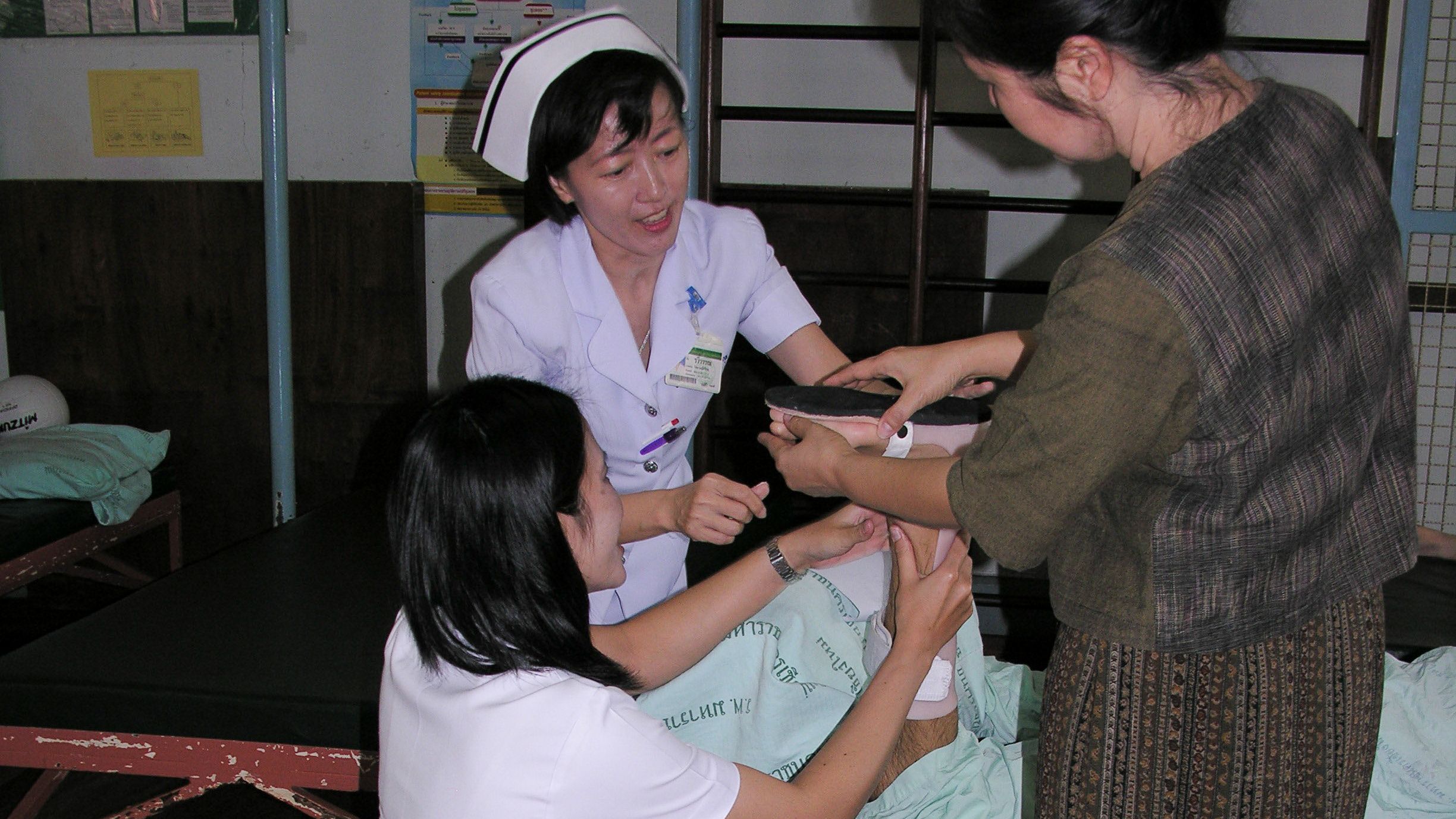Assignment and Intervention

For each intervention target appropriate interventions were identified and assigned to one or more members of Mr. Wun's multidisciplinary rehabilitation team.
The physical (PT) and occupational (OT) therapists shared the responsibility for addressing mobility-related intervention targets. While some intervention targets were addressed solely by the PT or solely by the OT, some intervention targets were tackled by both the PT and OT. For example, the PT conducted muscle endurance training to improve b455 Exercise tolerance functions and b740 Muscle endurance functions, and the OT used therapeutic games and provided Mr. Wun and his mother with training on using assistive devices to improve d440 Fine hand use and d445 Hand and arm use. Both the PT and OT provided strengthening exercises of the upper extremity to ameliorate b730 Muscle power functions.
Likewise, the physician and the nurse also shared the responsibility for specific intervention targets such as b620 Urination functions. While the physician was ultimately responsible for the medication, the nurse took prime responsibility for catheterisation and instructing Mr. Wun and his mother/caregiver on bladder management. These interventions were intended to prevent secondary complications rather than to improve urinary functions.
To address b820 Repair functions of the skin, both the physician and the nurse also performed appropriate wound care to foster optimal healing of the tracheostomy incision. Continued inadequate healing of the tracheostomy incision contributed to Mr. Wun’s swallowing difficulties. While it was hoped that the percutaneous endoscopic gastrostomy (PEG) tube that compensated for Mr. Wun's dysphagia (impairment in swallowing) could be removed, it had to remain as long as the dysphagia persisted. Thus, the nurse, together with the OT, conducted consultation sessions and provided training to Mr. Wun and his mother on using the assistive devices and optimising strategies for eating, drinking and swallowing.
The assignment of the intervention targets to the individual members of Mr. Wun's rehabilitation team and the interventions planned were documented on the ICF Intervention Table. See table 3. This table also displays the first value, i.e. the ICF qualifier that was given for the intervention target as a baseline rating at the initial assessment, the goal value i.e. the ICF qualifier value that was set as the goal to achieve with interventions for each target, and the final value i.e. the ICF qualifier rating given at the re-assessment of Mr. Wun's functioning after intervention.

Table 4: ICF Intervention Table; Doc = Physician; PT = Physical Therapist; OT = Occupational Therapist. The first value refers to the rating at the initial assessment, the goal value refers to the rating that should be achieved after the intervention, and the final value refers to the actual rating at the second/final assessment or evaluation. ICF qualifiers were used to determine these ratings (0 = no problem to 4 = complete problem) in the intervention targets. For the intervention targets representing the environmental and personal factors, the plus sign next to the value indicates a facilitator.
The ICF Intervention Table can facilitate rehabilitation management, specifically in planning and implementing the appropriate interventions for each intervention target. Having such an overview can help avoid gaps and redundancy in service provision.
""The ICF Intervention Table can facilitate rehabilitation management...such an overview can help avoid gaps and redundancy in service provision.""
Toward the end of Mr. Wun's one-month Rehab-Cycle® the rehabilitation team again assessed Mr. Wun's status in the intervention targets that were addressed during the intervention phase. This final assessment of Mr. Wun's functioning took place during the evaluation phase of the Rehab-Cycle®.